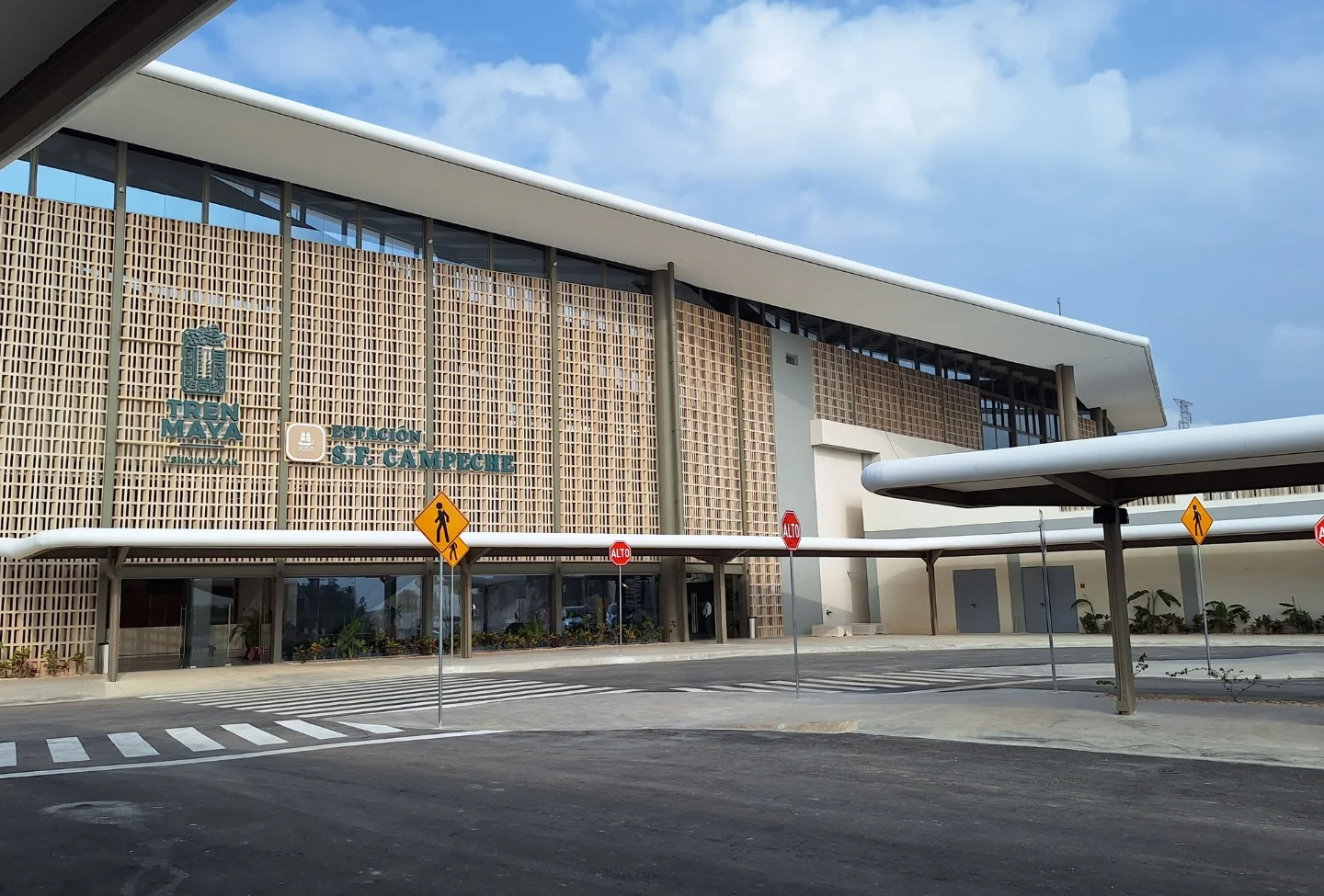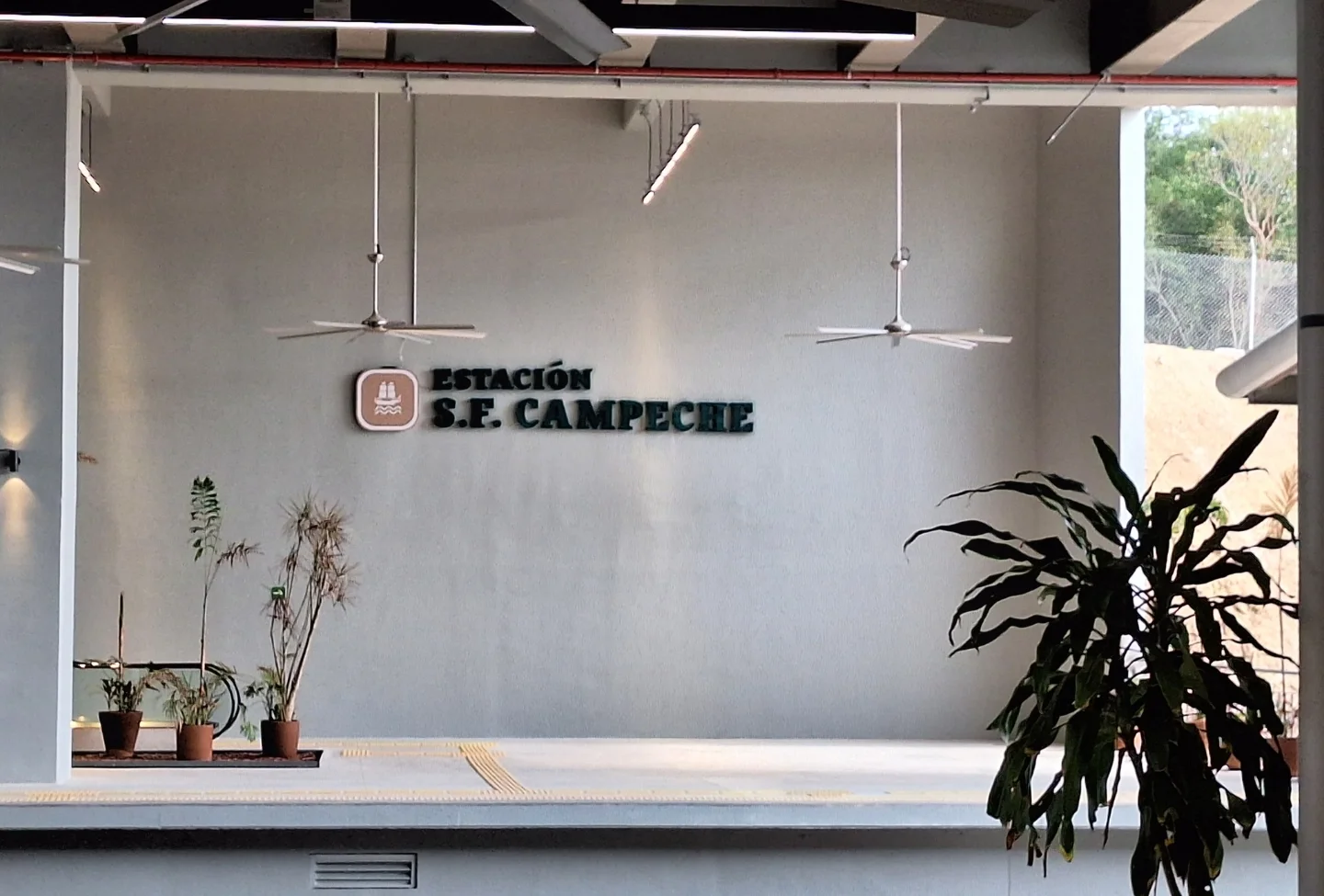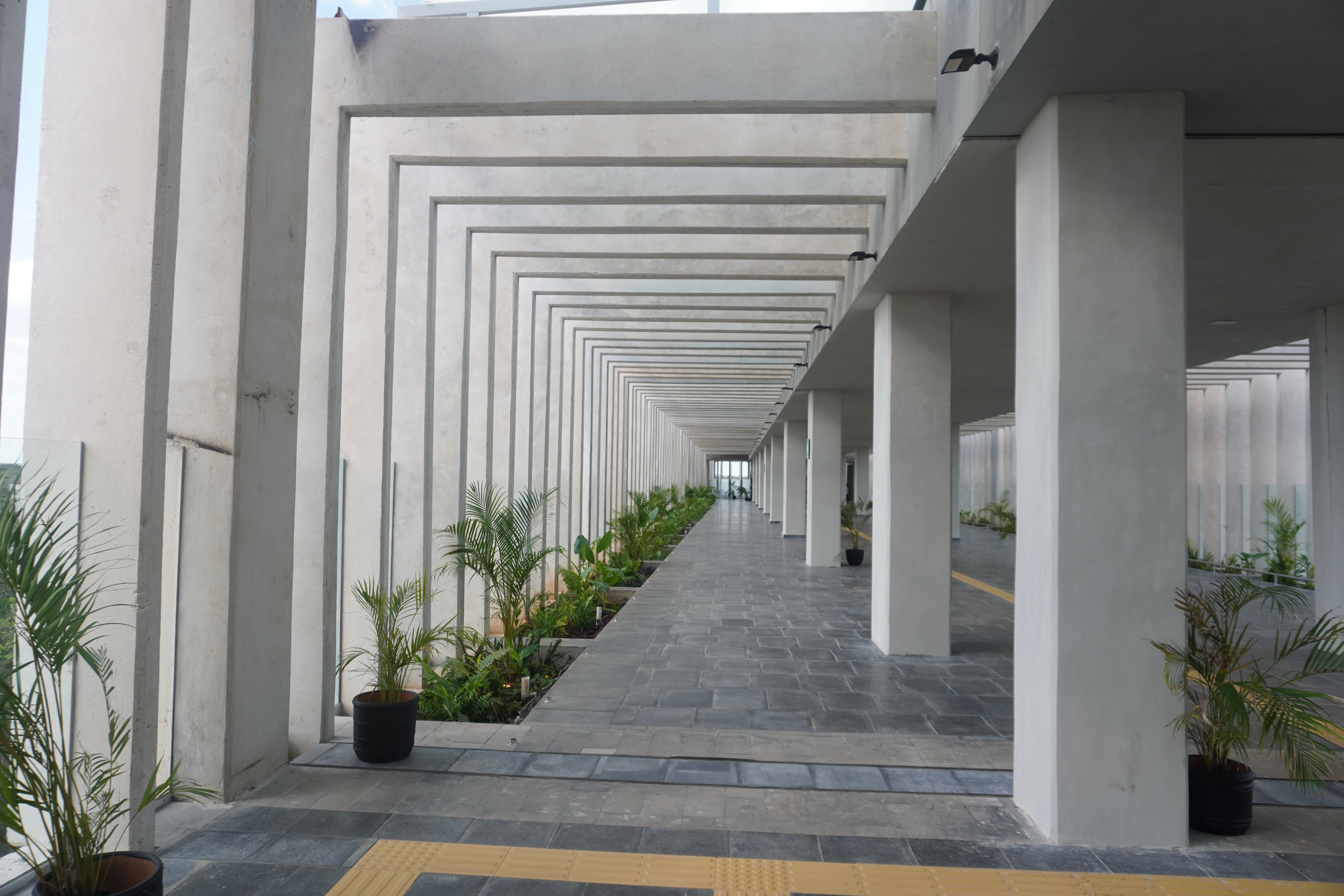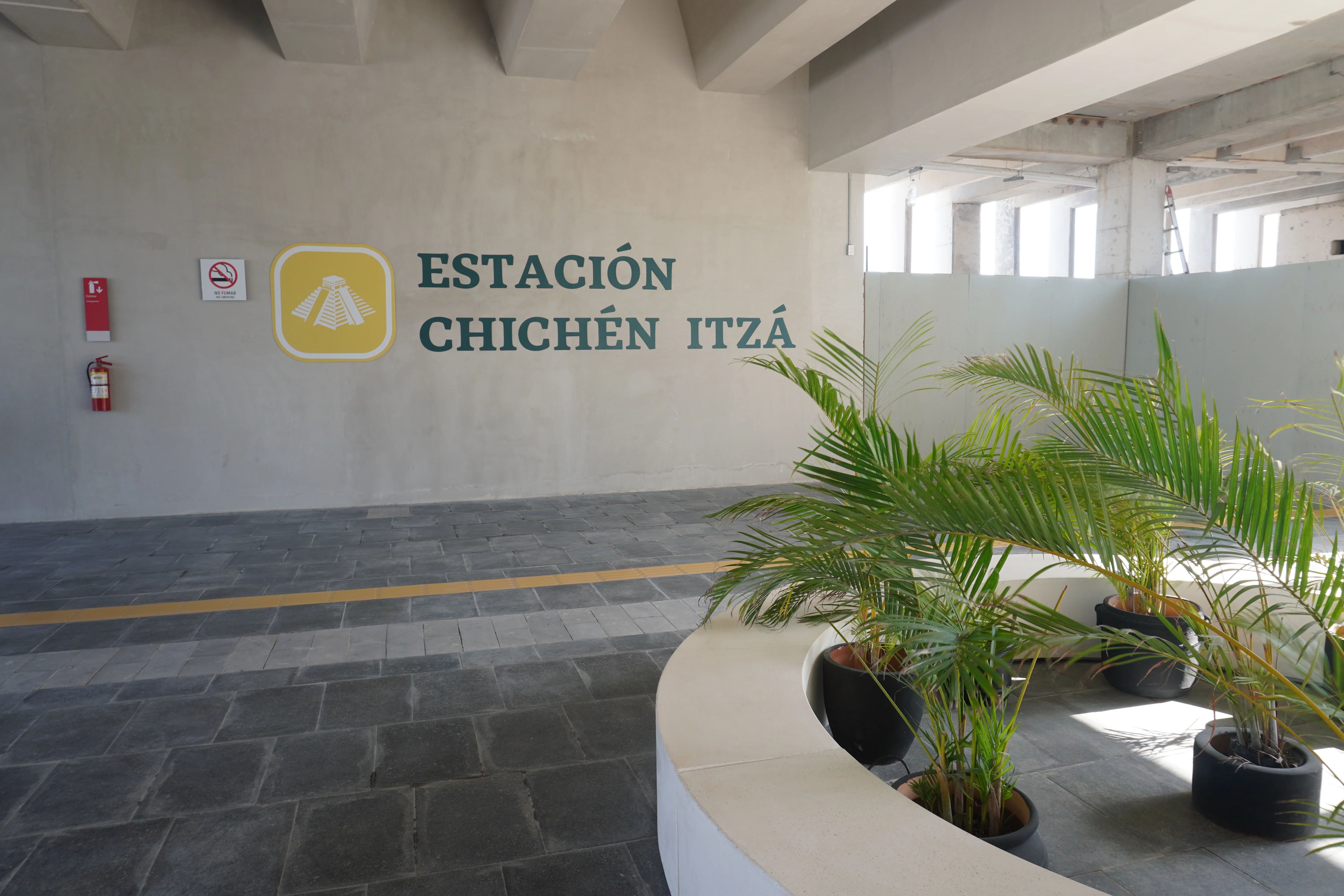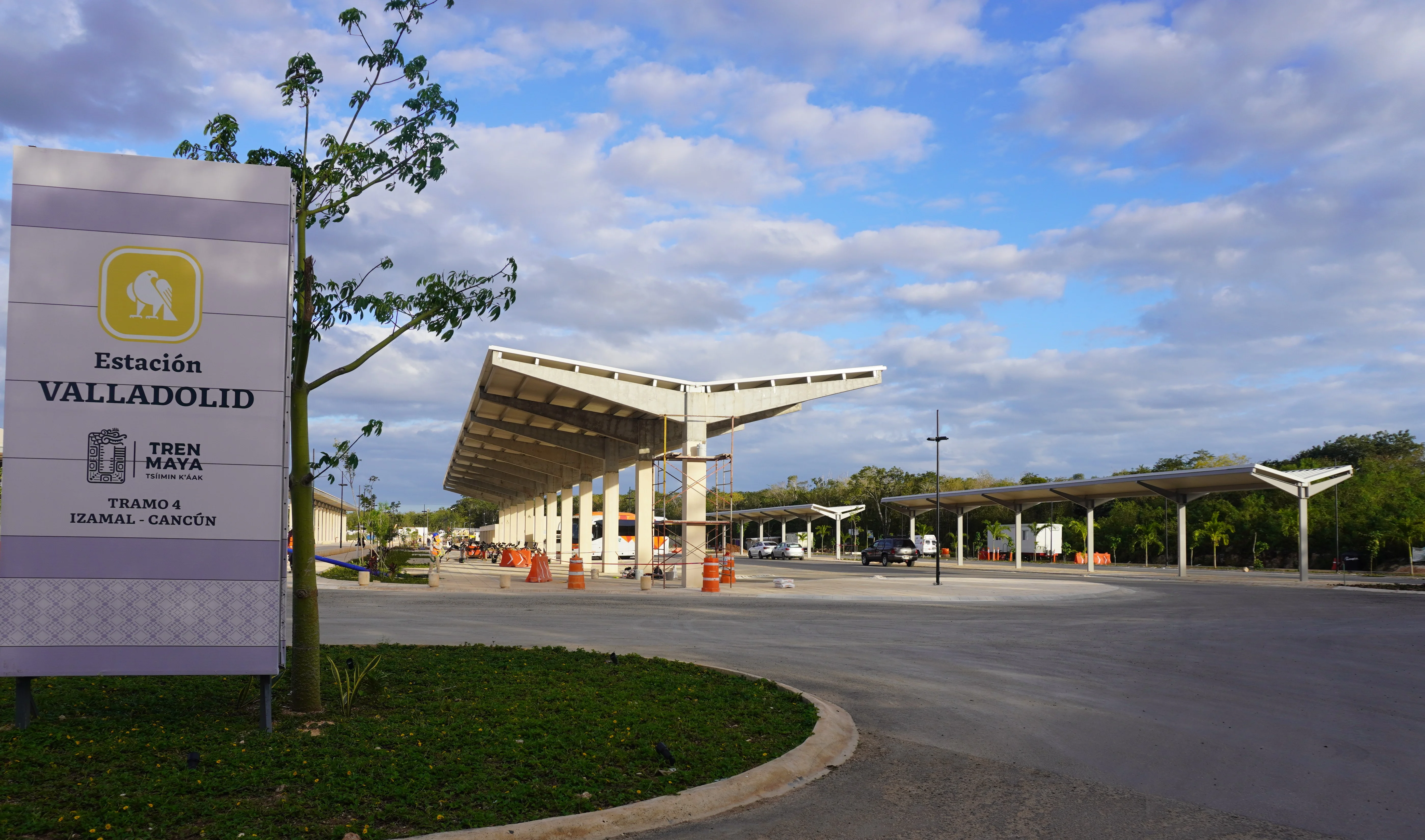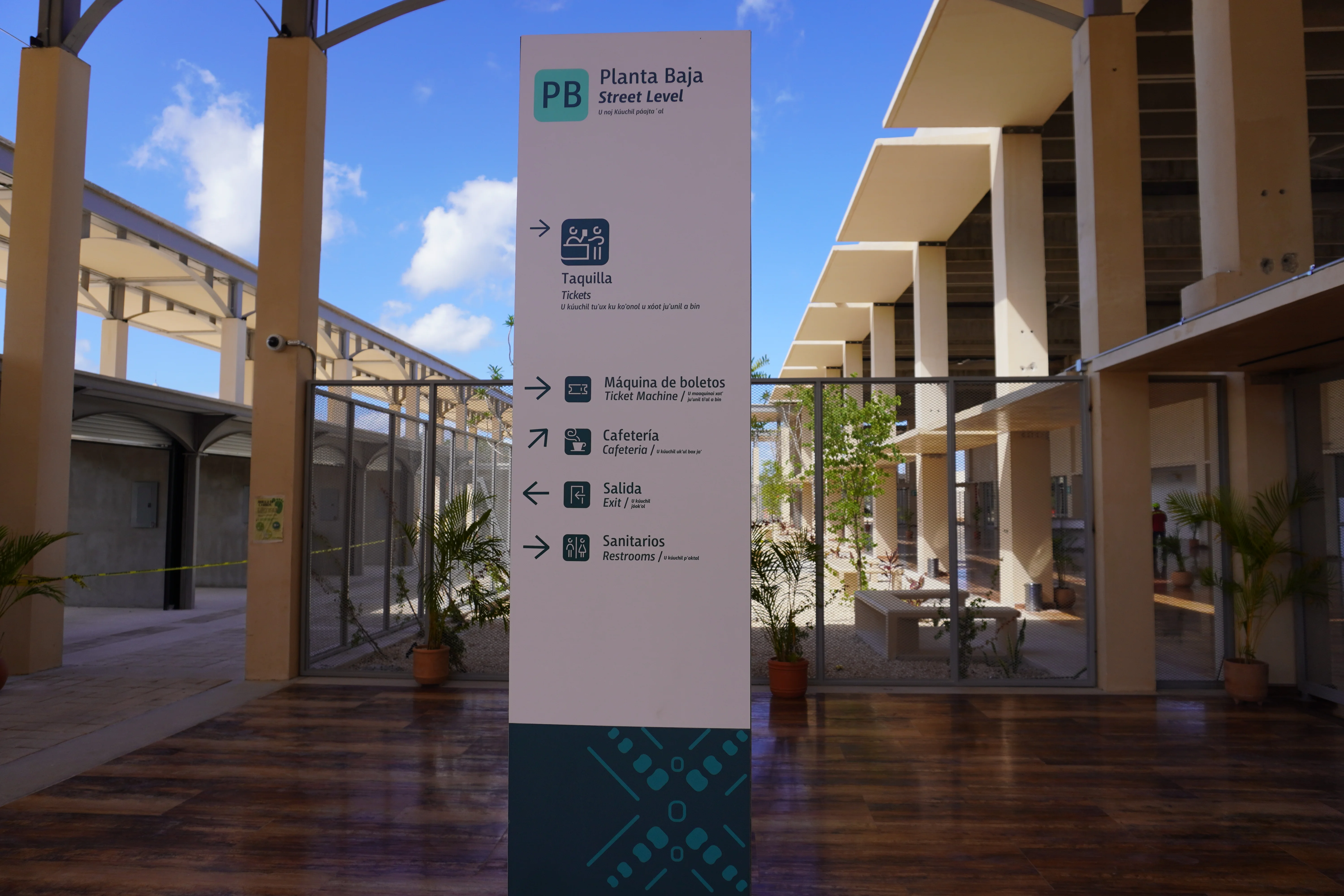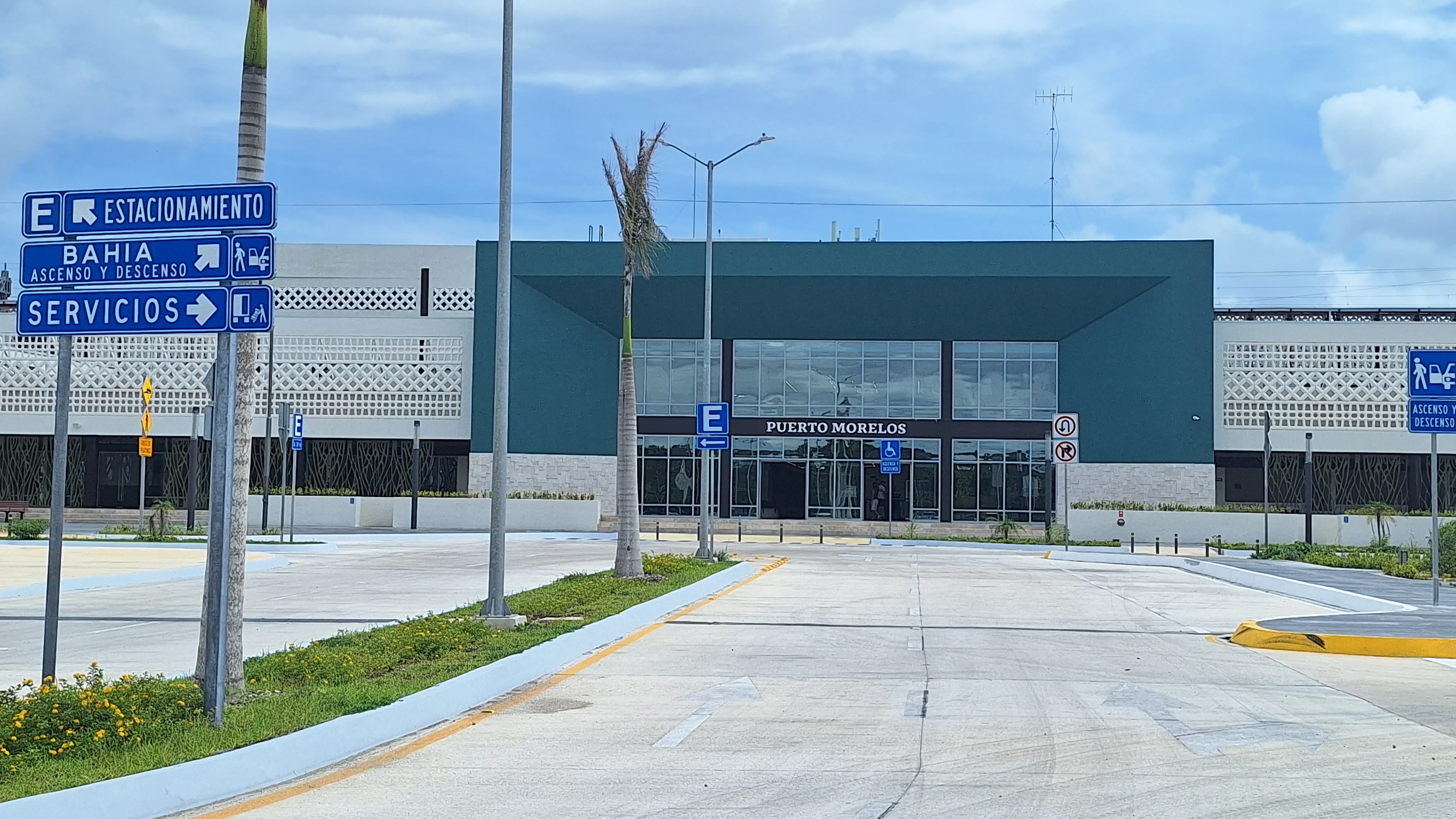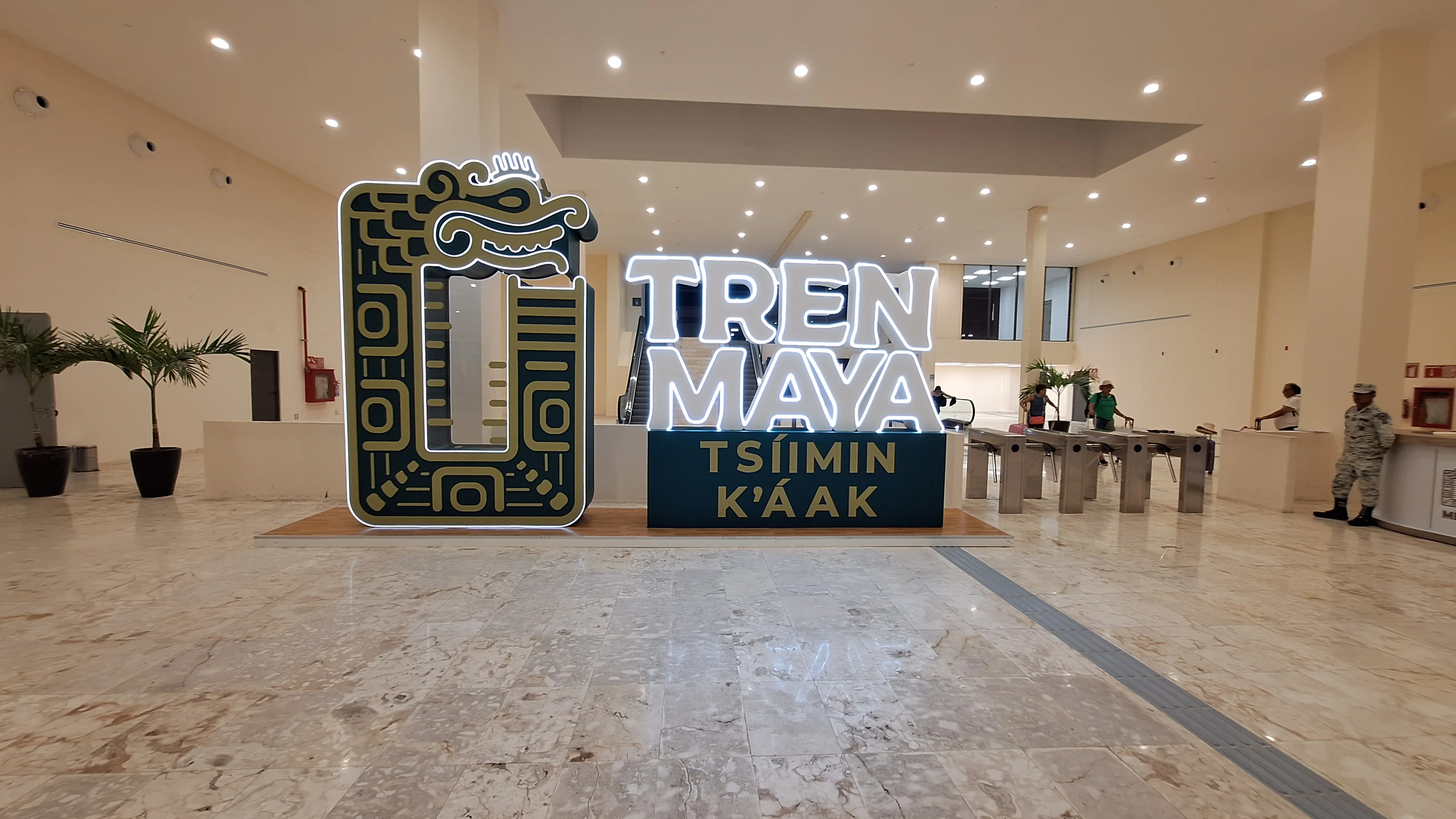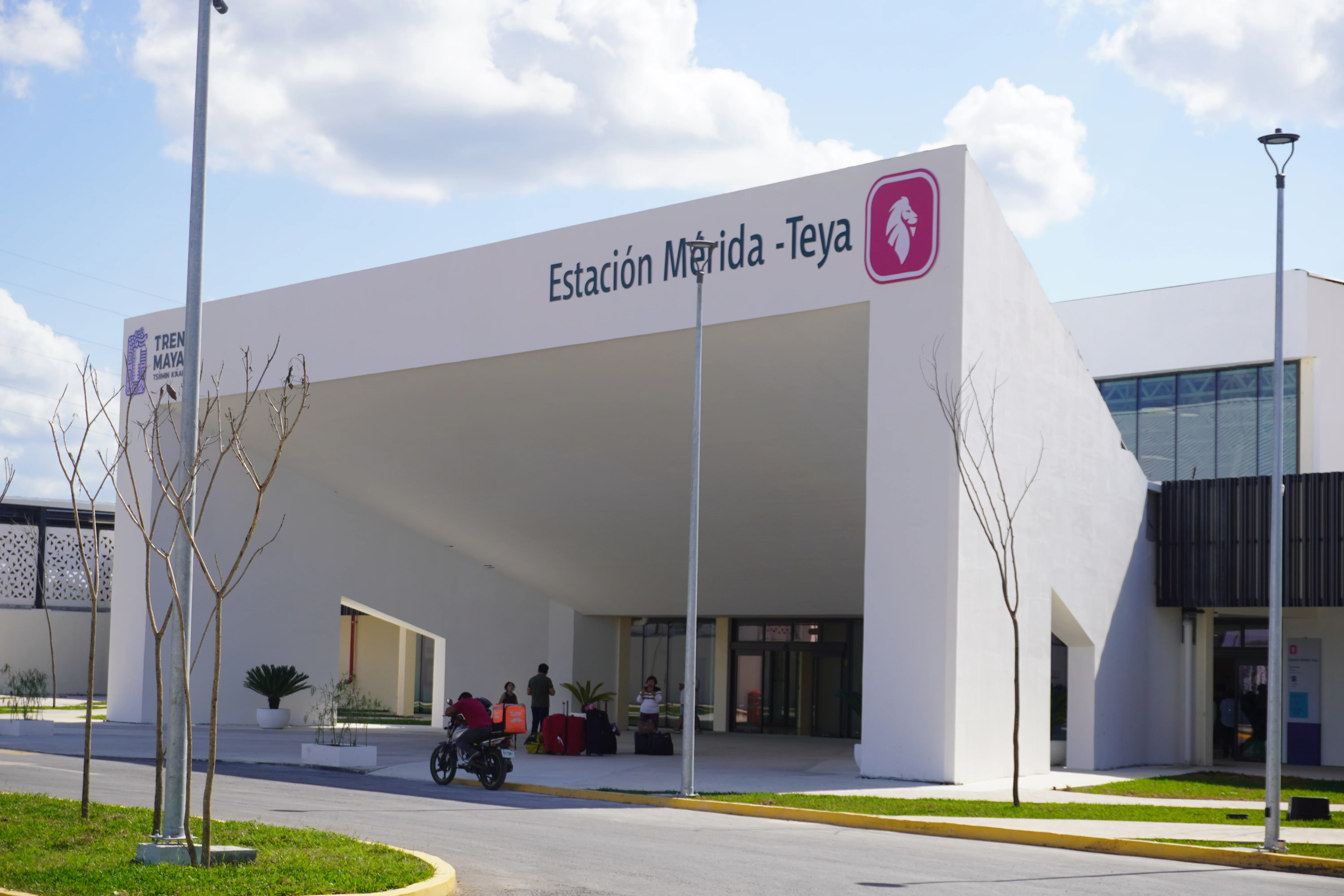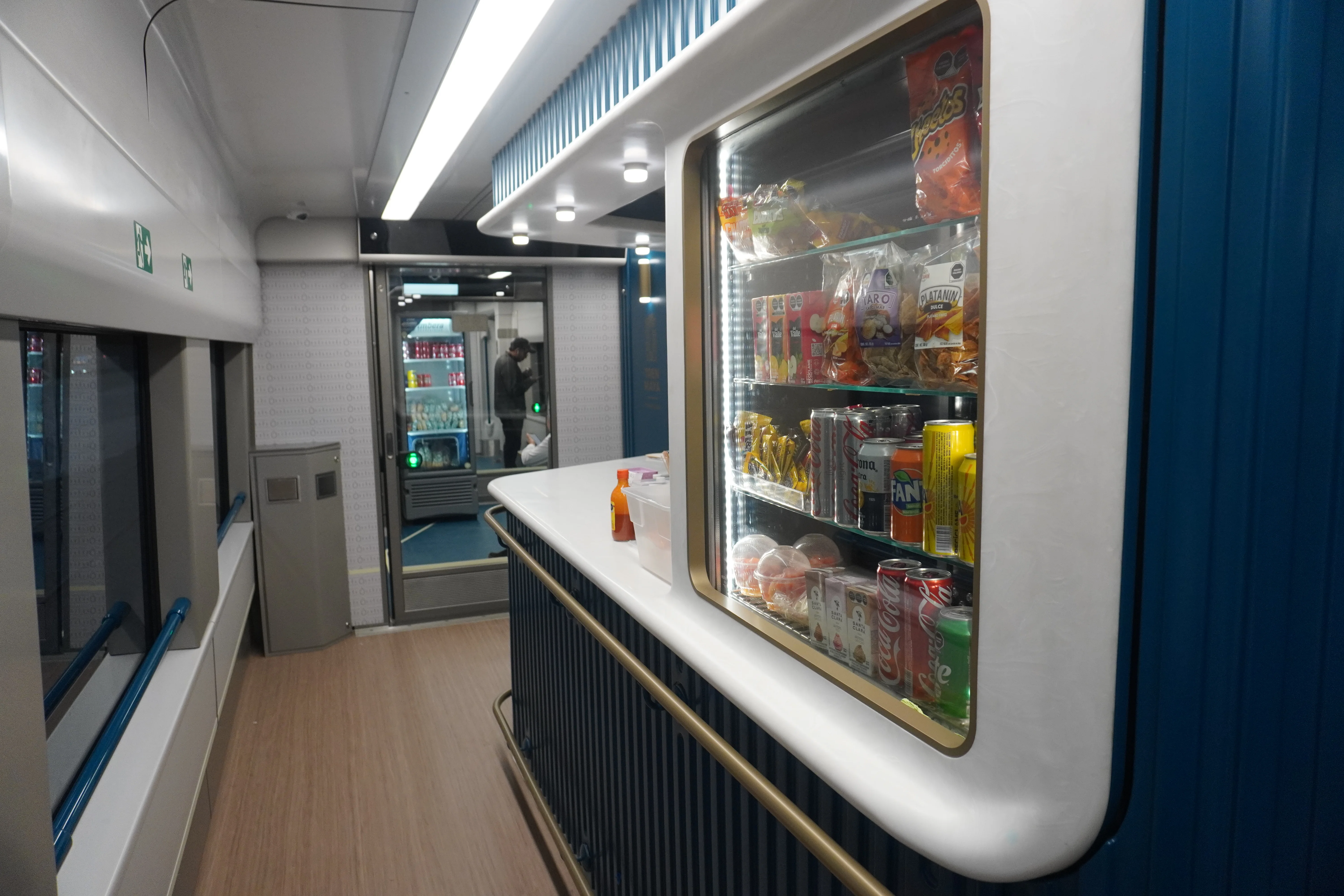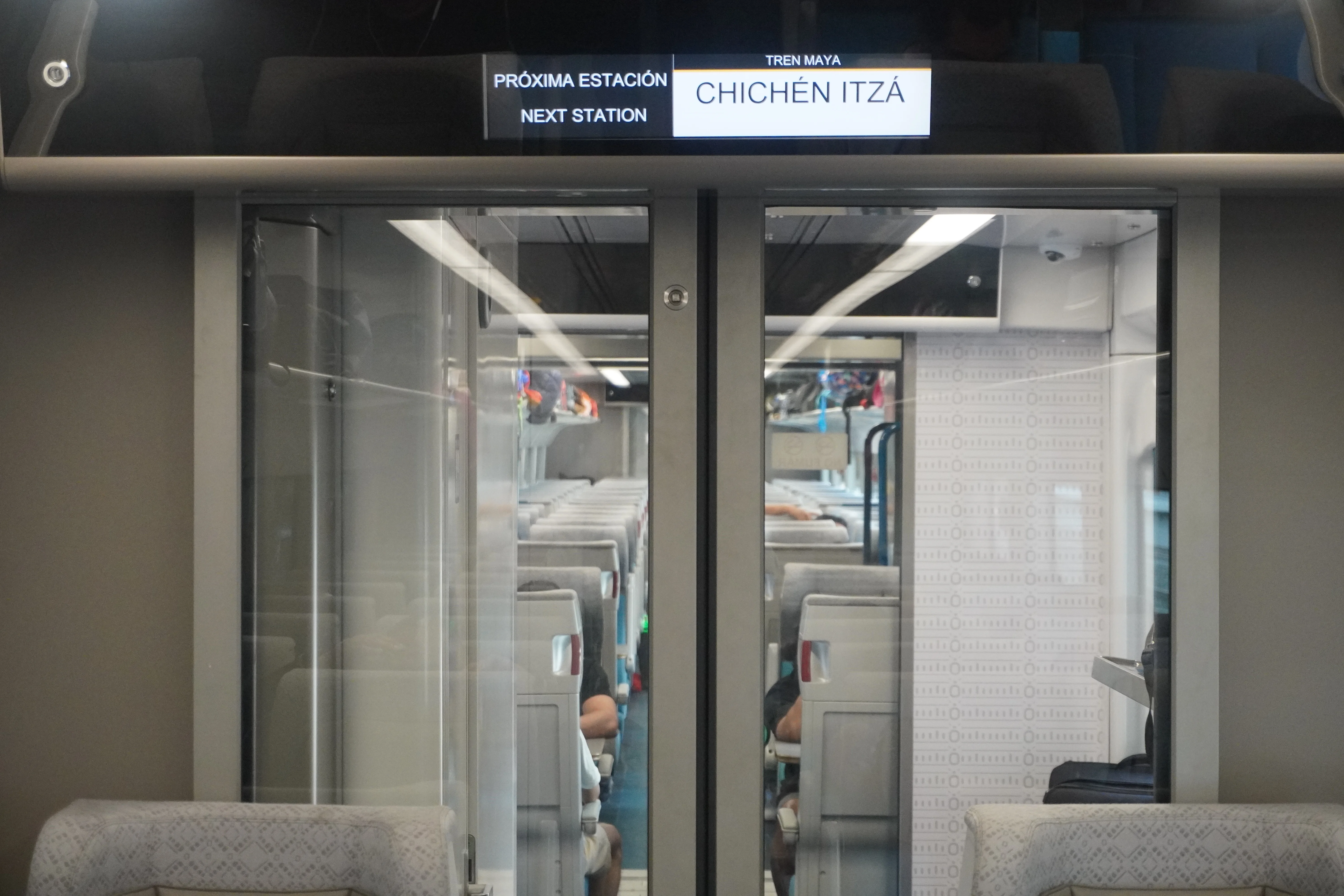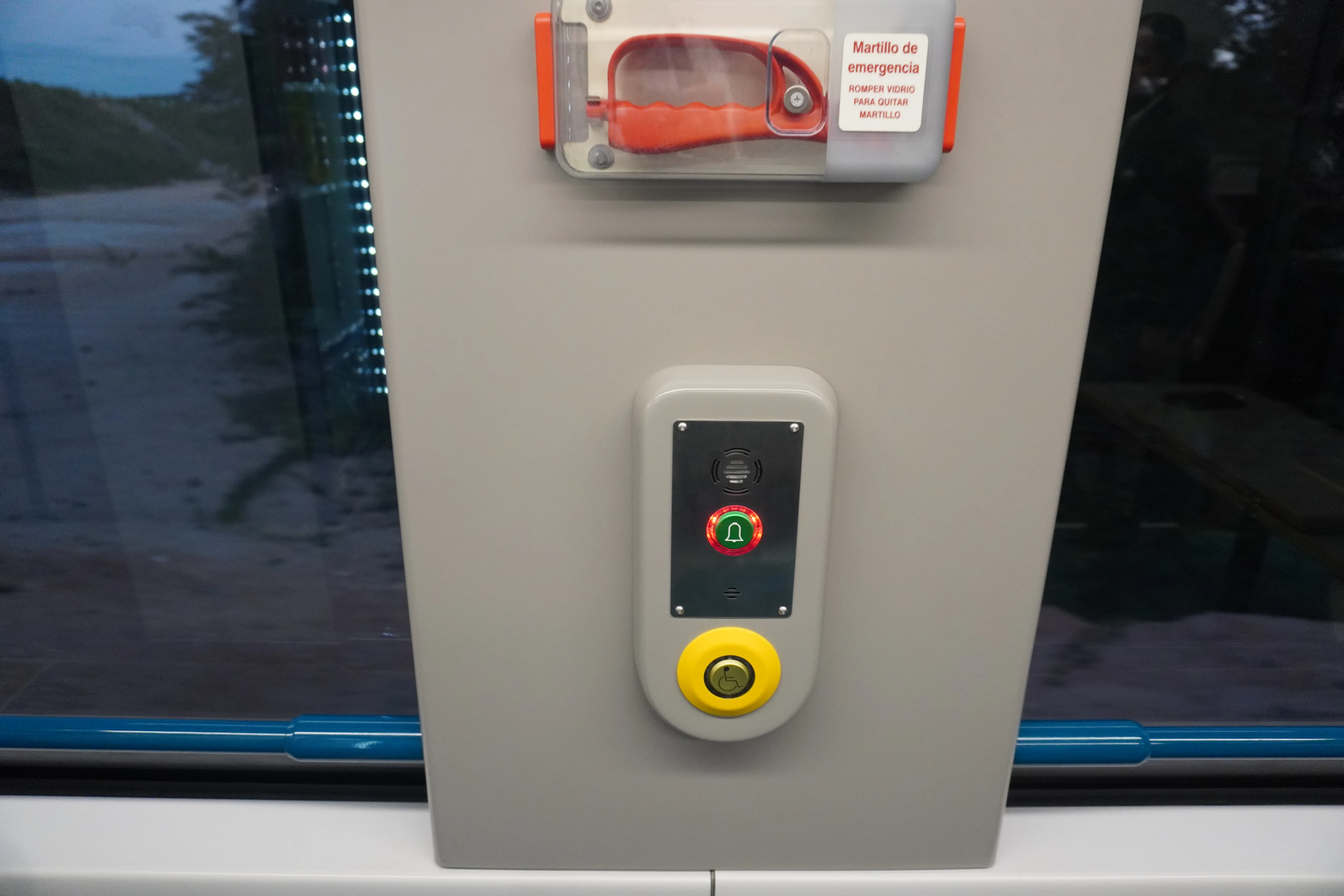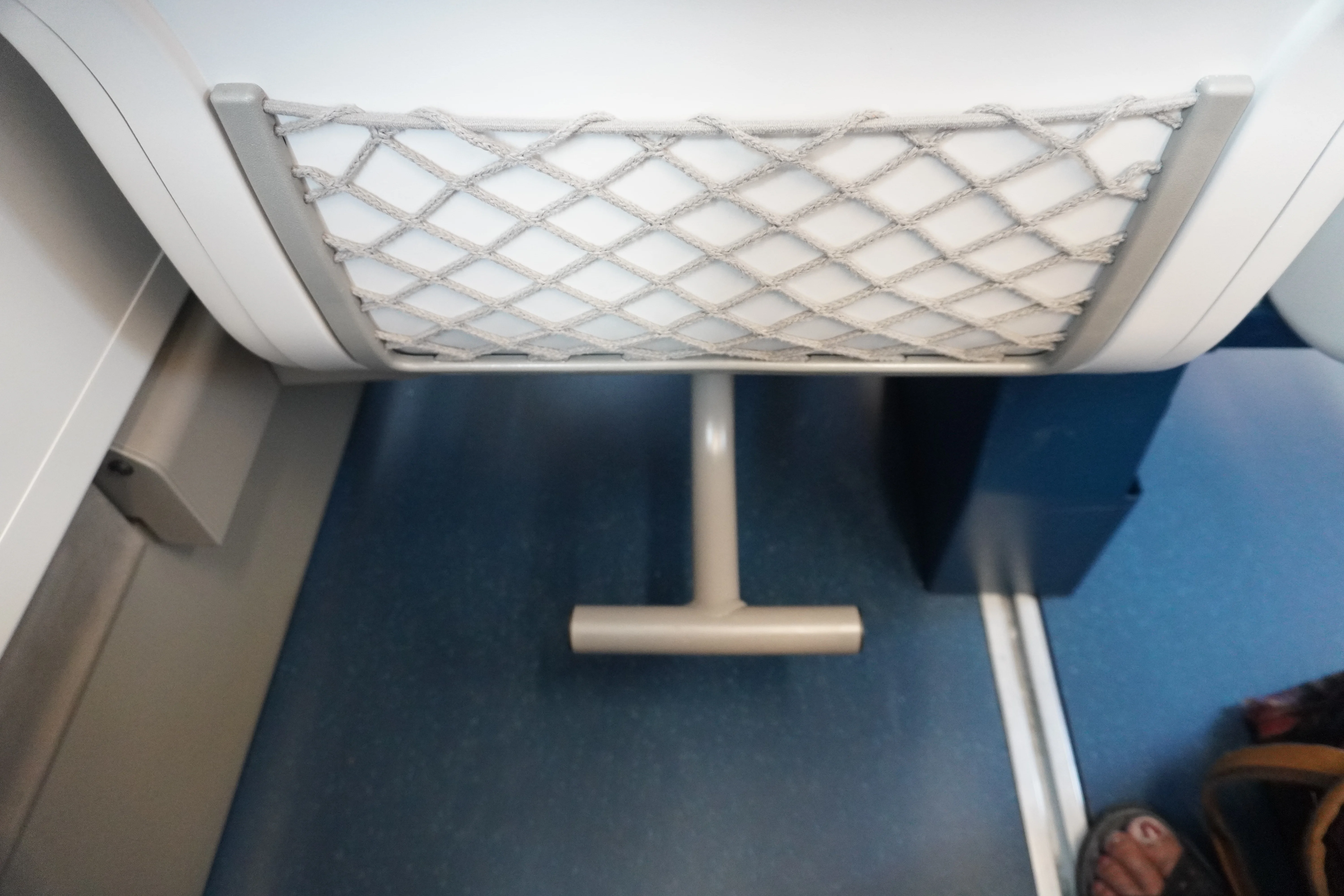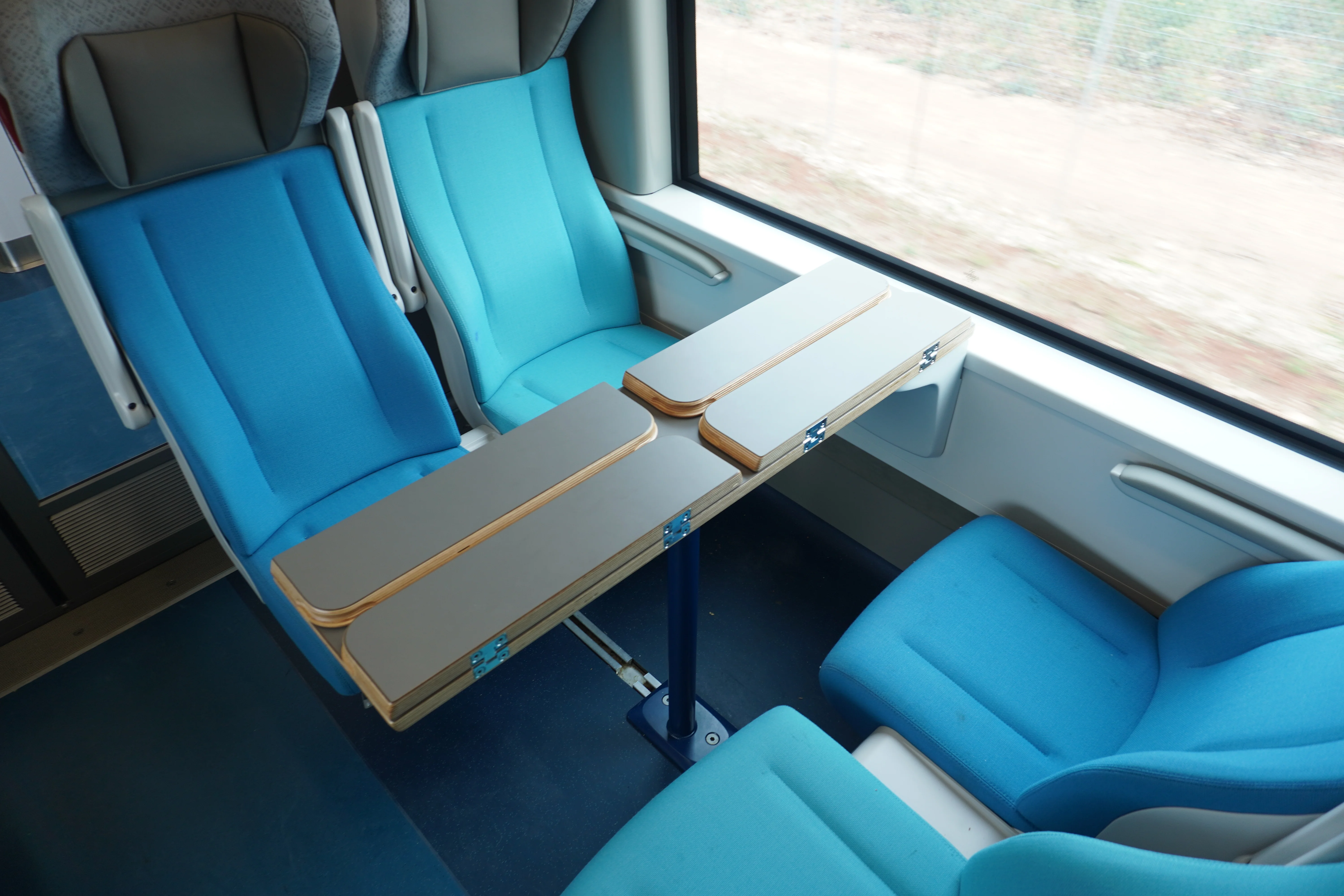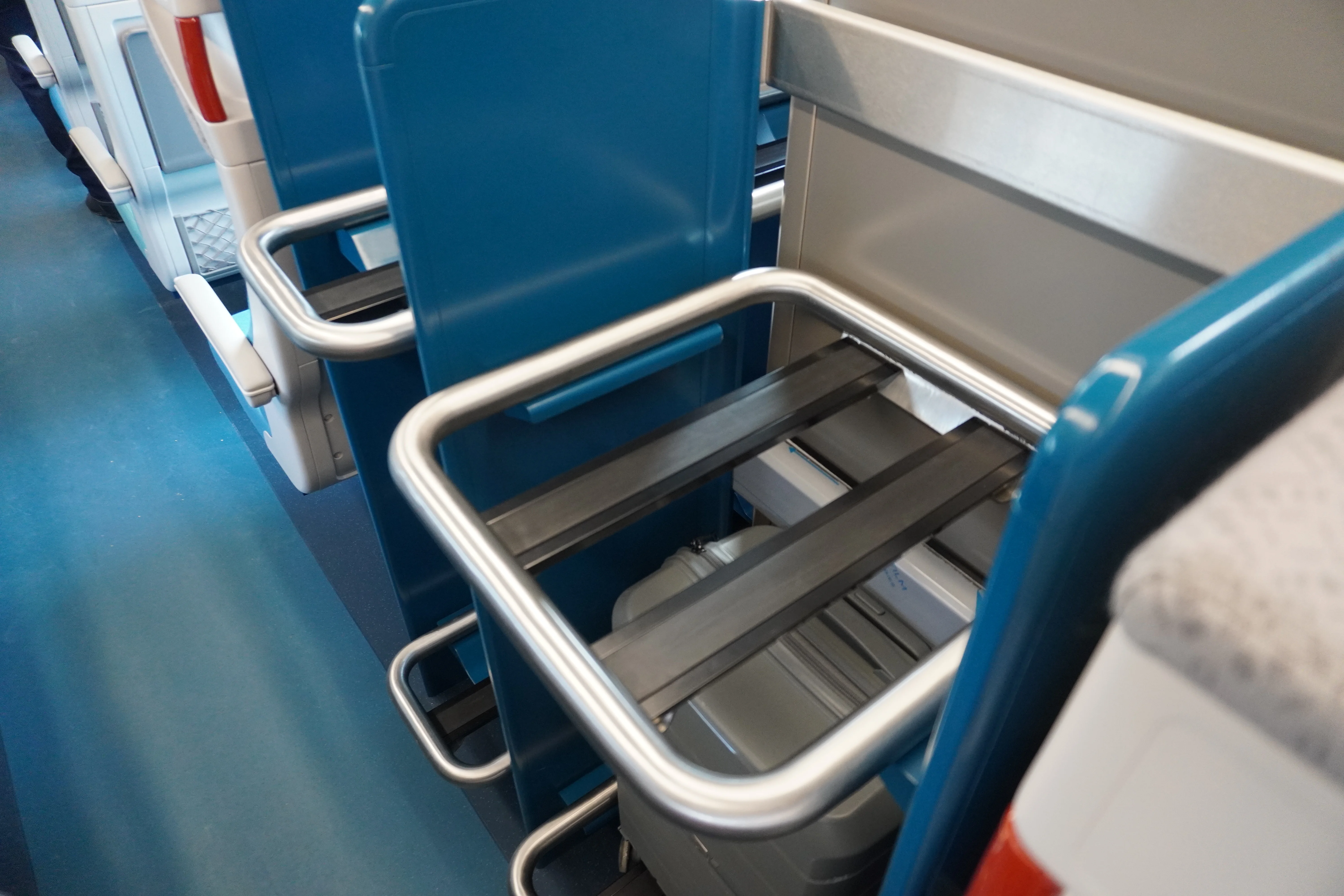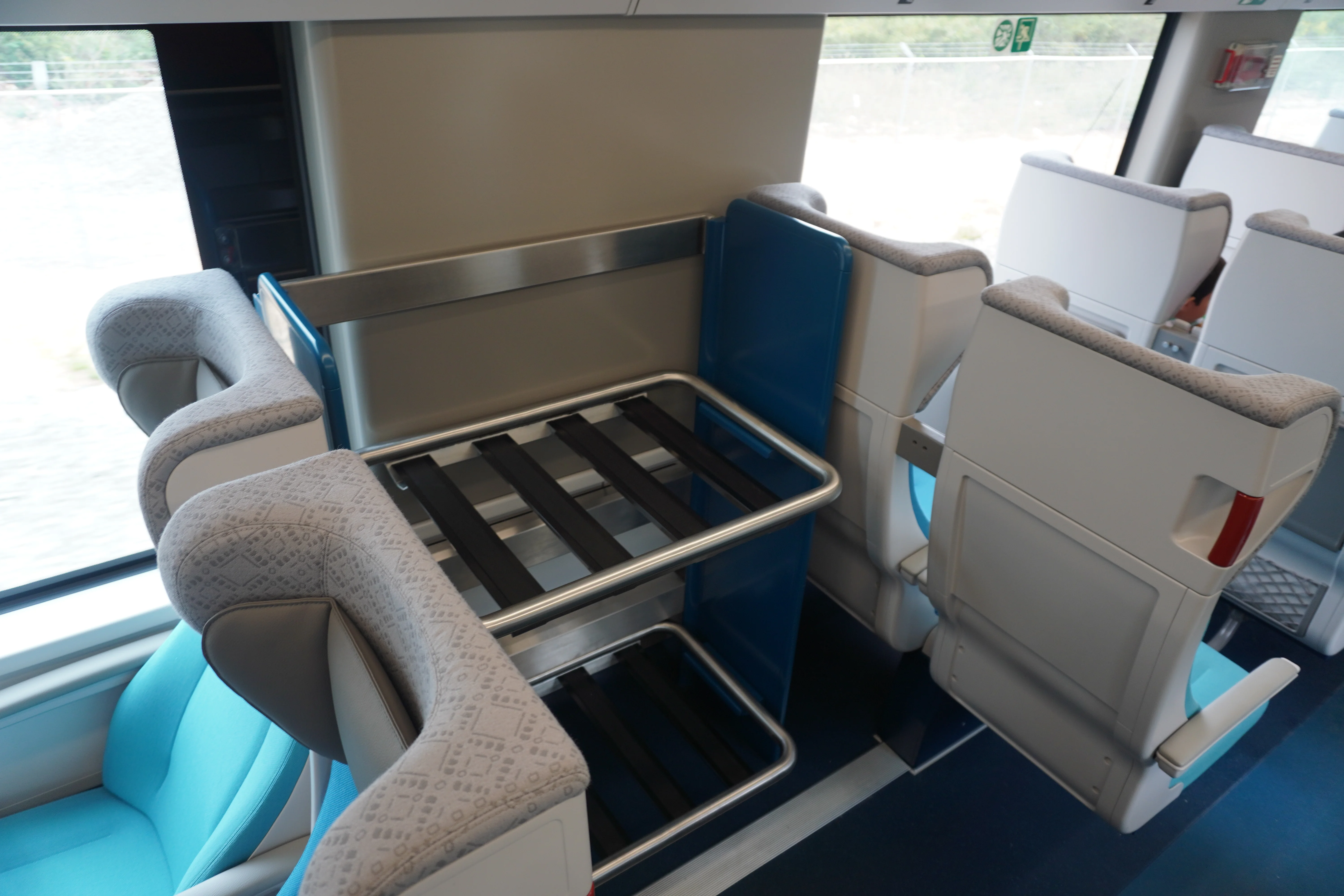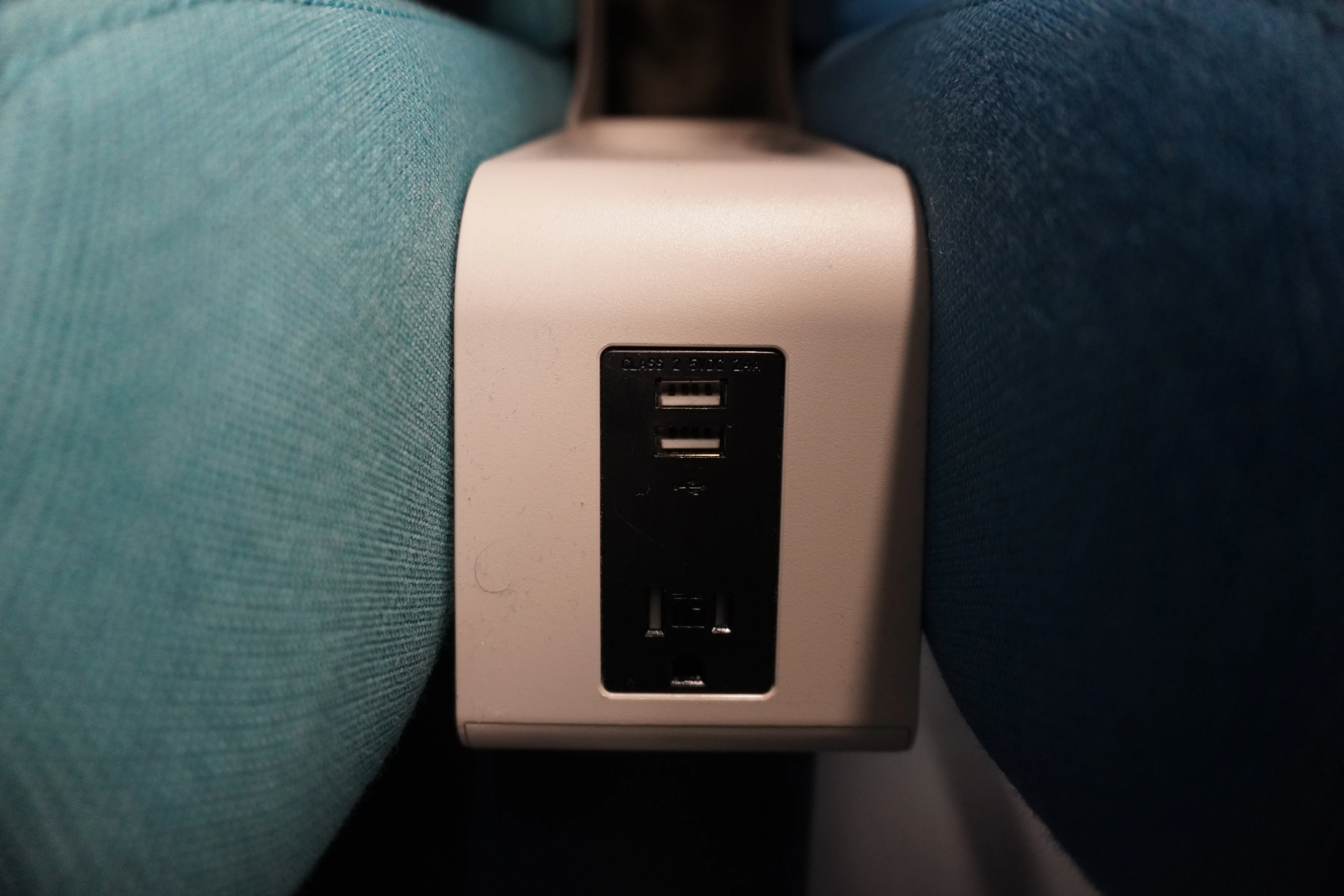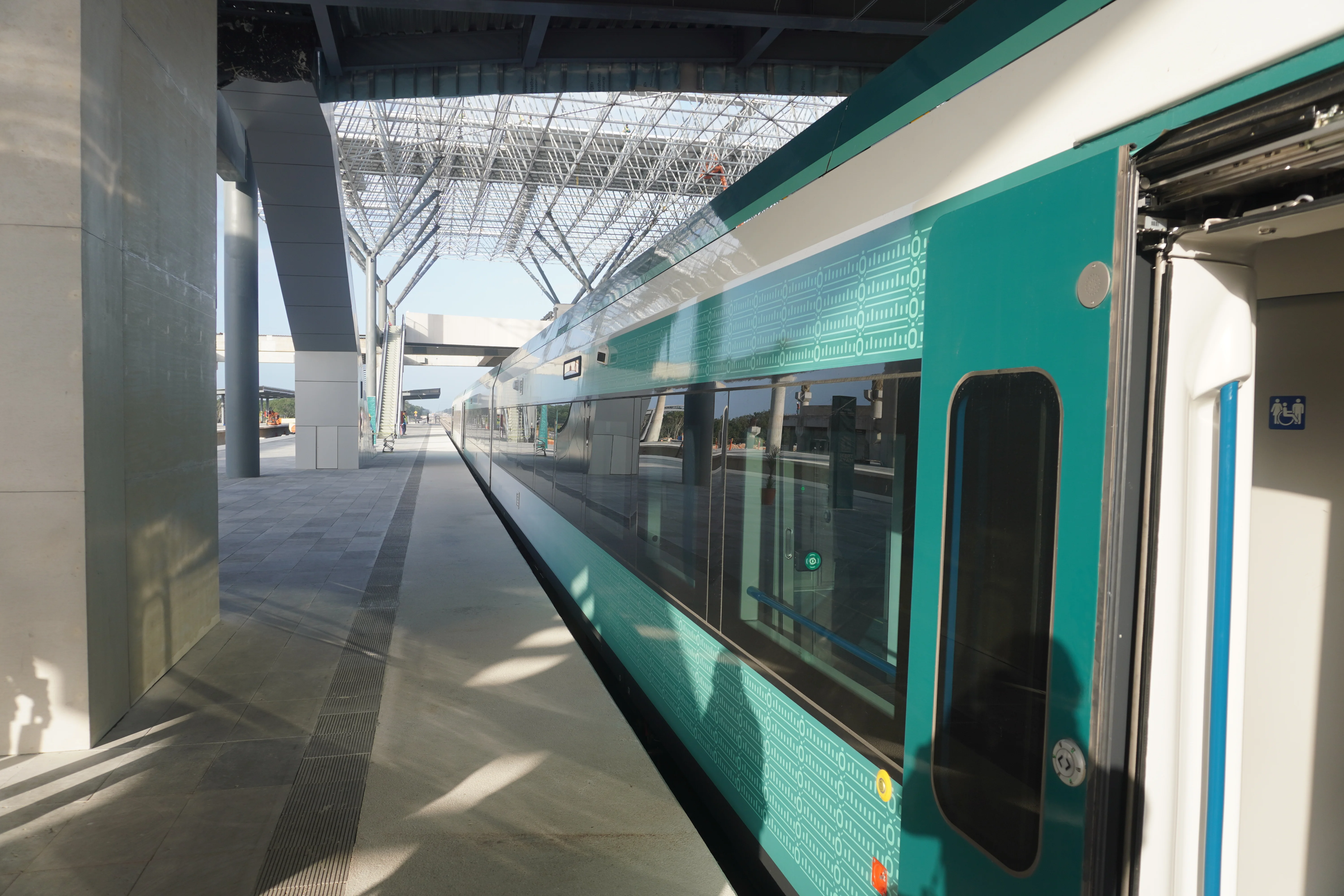Maya Train vs. Bus? Mexico's Maya Train is a groundbreaking project that has caught the attention of travelers worldwide, offering an exciting new way to discover the vibrant southeastern region. By linking ancient archaeological wonders, charming magical towns, and breathtaking coastal landscapes, the train introduces a modern travel option in a region traditionally dominated by bus transportation.
For those considering their travel choices of the Maya Train vs. Bus, this guide provides a comprehensive comparison of the Maya Train vs. Bus, covering essential details like ticket prices, route options, onboard comfort, and available amenities.
Whether you're seeking efficiency or a unique travel experience—this breakdown of the Maya Train vs. Bus has you covered!

Budget-Friendly Travel: Maya Train vs. Bus
Maya Train vs. Bus? For decades, buses have been the backbone of ground transportation in Mexico’s southeastern region, connecting towns and cities with flexibility and affordability. However, the introduction of the Maya Train offers travelers a fresh, competitive alternative that caters to a variety of budgets and preferences.
Bus:
Services in the region vary widely in cost and comfort, depending on the type of service and the distance traveled.
Economy Class: A basic, no-frills option for short distances. For example, a journey between Valladolid and Mérida can typically costs between $13 USD ($250 MXN) to $17 USD ($350 MXN).
First-Class Services: For a more comfortable ride with amenities like Wi-Fi and entertainment, fares for routes like Cancún to Mérida cost upwards of $25 USD ($500 MXN).
Buses remain widely available and dependable, but their schedules and service quality can vary depending on the operator.

Maya Train:
The Maya Train introduces a dynamic alternative, combining affordability with enhanced travel experiences. Pricing is distance-based and divided into two service classes, catering to both local residents and tourists.
Tourist Class:
Perfect for travelers on a budget, tickets start at $3 USD ($60 MXN) for shorter routes, making it an excellent choice for day trips or exploring nearby towns. For longer journeys, prices remain competitive compared to standard bus fares.
Premier Class:
Offering a premium experience with additional amenities and confort, fares range from $9.70 USD ($200 MXN) to $25 USD ($500 MXN), depending on the distance traveled.
One unique advantage of the Maya Train is its resident discounts, which make it particularly attractive for locals seeking economical travel options. Additionally, its modern infrastructure includes sleeper cabins for overnight trips, something not available on most bus services.
Factors That Affect Pricing: Maya Train vs. Bus
Traveling through southeastern Mexico can be even more economical if you take advantage of the various discounts and promotions offered by both bus and the Maya Train. Here's a breakdown of how these options compare when it comes to affordability so you can compare the Maya Train vs. Bus.
Seasonal Promotions:
Both buses and the Maya Train frequently offer reduced fares during off-peak travel periods, making it an ideal time for budget-conscious travelers to explore the region. Discounts can range from 10% to 30%, depending on the provider.
Special Rates:
There are also rates for students, seniors, and children make family travel more affordable. Children under a certain age often travel for free or at half price, while students and seniors can access discounts of up to 50% with a valid ID.
Local Resident Discounts:
A standout feature of the Maya Train is its local resident discount program, designed to promote accessibility and affordability for southeastern Mexico’s inhabitants. These fares significantly lower the cost of commuting or short-distance travel for those living in the region to promote local mobility at lower costs.
Peak Season Considerations:
Bus Pricing: Ticket prices often spike during holiday periods, weekends, and festivals when demand increases. For instance, fares may double during Christmas or Easter travel seasons.
Maya Train Stability: While not immune to peak season demand, the Maya Train is expected to maintain more consistent pricing, providing better predictability for budget planning.
Maya Train vs. Bus Peak Season Pricing: Bus fares often rise during holidays and peak travel periods due to higher demand, while the Maya Train may maintain more consistent rates.
Comparing Routes and Travel Flexibility: Maya Train vs. Buses
The Maya Train’s 1,500-kilometer network spans five states—Chiapas, Tabasco, Campeche, Yucatán, and Quintana Roo. Stops include key tourist destinations like Cancún, Mérida, Campeche, Tulum, and Palenque. Designed to connect archaeological sites, nature reserves, and vibrant cities, the train is an excellent choice for travelers focused on these attractions.
Buses remain a staple for travelers seeking flexibility and coverage. Unlike the Maya Train, buses serve a vast array of smaller towns, remote villages, and off-the-beaten-path destinations. This makes them the best option for travelers looking to explore less-touristy areas or customize their travel plans.
This comparison of the Maya Train vs. Bus considers the two service classes offered by the Maya Train (Tourist and Premier) and the services available for buses (Standard and Platinum).
Please note that all prices are estimated in USD and may vary depending on the daily exchange rate of the dollar.
Main Destinations | Maya Train (Tourist Class) | Maya Train (Premier Class) | Bus (Standard) | Bus (Platinum) |
From Cancun to Palenque | Special $52 USD ($1,061.50 MXN) Local $59 USD ($1,199.00 MXN) National $104 USD ($2,123.50 MXN) Intl. $138 USD ($2,826.00 MXN) (10 hrs 52 min) | National $165 USD ($3,391.00 MXN) Intl. $220 USD ($4,521.99 MXN) (10 hrs 52 min) | AU $55 USD ($1,120.00 MXN) OCC $68 USD ($1,384.00 MXN) (14 hrs 35 min) | N/A |
From Merida to Cancun | Special $18 USD ($367.50 MXN) Local $24 USD ($489.00 MXN) National $36 USD ($735.00 MXN) Intl. $48 USD ($977.50 MXN) (3 hrs 21 min) | National $57 USD ($1,173.50 MXN) Intl. $76 USD ($1,564.50 MXN) (3 hrs 21 min) | $33 USD ($676.00 MXN) (4 hrs 23 min) | $49 USD ($1,008.00 MXN) (4 hrs 23 min) |
From Merida to Palenque | Special $34 USD ($694.50 MXN) Local $45 USD ($924.00 MXN) National $68 USD ($1,389.00 MXN) Intl. $90 USD ($1,848.00 MXN) (7 hrs 6 min) | National $108 USD ($2,217.50 MXN) Intl. $145 USD ($2,957.00 MXN) (7 hrs 6 min) | $51 USD ($1,046.00 MXN) (8 hrs 25 min) | N/A |
From Valladolid to Campeche | Special $19 USD ($405.50 MXN) Local $27 USD ($539.50 MXN) National $40 USD ($811.00 MXN) Intl. $53 USD ($1,079.50 MXN) (4 hrs 23 min) | National $63 USD ($1,295.50 MXN) Intl. $84 USD ($1,727.00 MXN) (4 hrs 23 min) | N/A | N/A |
From Valladolid to Merida | Special $9 USD ($190.00 MXN) Local $13 USD ($253.00 MXN) National $18 USD ($380.00 MXN) Intl. $25 USD ($505.50 MXN) (2 hrs 2 min) | National $30 USD ($606.50 MXN) Intl. $40 USD ($809.00 MXN) (2 hrs 2 min) | $16 USD ($336.00 MXN) (2 hrs 25 min) | N/A |
From Chichen Itza to Cancun | Special $10 USD ($224.00 MXN) Local $15 USD ($298.00 MXN) National $21 USD ($448.00 MXN) Intl. $29 USD ($596.50 MXN) (1 hrs 59 min) | National $35 USD ($715.50 MXN) Intl. $45 USD ($954.00 MXN) (1 hrs 59 min) | $20 USD ($414.00 MXN) (2 hrs 45 min) | N/A |
From Escarcega to Cancun | Special $38 USD ($781.50 MXN) Local $45 USD ($933.00 MXN) National $76 USD ($1,563.50 MXN) Intl. $145 USD ($2,980.50 MXN) (7 hrs 53 min) | National $121 USD ($2,496.50 MXN) Intl. $162 USD ($3,329.00 MXN) (7 hrs 53 min) | AU $43 USD ($890.00 MXN) OCC $52 USD ($1,080.00 MXN) (9 hrs 10 min) | N/A |
From Campeche to Merida | Special $10 USD ($215.50 MXN) Local $14 USD ($287.00 MXN) National $21 USD ($431.50 MXN) Intl. $28 USD ($574.00 MXN) (1 hrs 56 min) | National $33 USD ($688.50 MXN) Intl. $45 USD ($918.00 MXN) (1 hrs 56 min) | $17 USD ($352.00 MXN) (2 hrs 35 min) | $22 USD ($450.00 MXN) (2 hrs 35 min) |
From Campeche to Calkini | Special $5 USD ($100.50 MXN) Local $7 USD ($133.50 MXN) National $10 USD ($201.00 MXN) Intl. $13 USD ($267.50 MXN) (1 hrs 21 min) | National $16 USD ($321.00 MXN) Intl. $21 USD ($427.50 MXN) (1 hrs 21 min) | N/A | N/A |
From Izamal to Edzna | Special $16 USD ($320.00 MXN) Local $21 USD ($426.00 MXN) National $31 USD ($640.00 MXN) Intl. $42 USD ($852.00 MXN) (3 hrs 45 min) | National $50 USD ($1,022.50 MXN) Intl. $66 USD ($1,363.00 MXN) (3 hrs 45 min) | N/A | N/A |
From Tulum to Playa del Carmen | Special $4 USD ($78.50 MXN) Local $5 USD ($104.50 MXN) National $8 USD ($157.00 MXN) Intl. $10 USD ($209.00 MXN) (0 hrs 48 min) | National $12 USD ($251.00 MXN) Intl. $16 USD ($334.50 MXN) (0 hrs 48 min) | $6 USD ($126.00 MXN) (1 hrs 0 min) | N/A |
Comparing Routes and Flexibility: Maya Train vs. Bus
Maya Train vs. Bus? Stretching over approximately 1,500 kilometers, the Maya Train will connect five states: Chiapas, Tabasco, Campeche, Yucatán, and Quintana Roo. Some of its main stops include Cancún, Mérida, Campeche, Tulum, Bacalar, Palenque, and Calakmul.
Train Frequency: The Maya Train is planned to operate several times a day, though schedules may vary depending on the section of the route and passenger demand.
Destinations Covered: The train network has been thoughtfully designed to link prominent tourist attractions and important archaeological sites. For example, Mérida Teya Station is part of the Maya Train network.
Meanwhile, buses provide a wider range of coverage and greater flexibility. They can access smaller towns, isolated areas, and locations that fall outside the Maya Train's planned routes.
Bus Frequency: Buses tend to run more frequently, particularly along busy routes like Cancún-Mérida or Playa del Carmen-Tulum.
Maya Train vs. Bus? The Maya Train is ideal for travelers focusing on major landmarks and popular tourist hubs. However, for reaching less-visited communities or enjoying adaptable schedules, buses remain a practical and flexible choice.

Enhanced Comfort and Onboard Experience: Maya Train vs. Buses
Comparing the Maya Train vs. Bus, both strive to provide comfortable and convenient travel options, but they cater to different preferences and styles of travel.
Maya Train Highlights:
The Maya Train aims to transform travel into an immersive experience, combining modern convenience with cultural richness:
Comfortable Seating: Reclining seats are available in both Tourist and Premier classes, ensuring a relaxed journey.
Climate Control: Air-conditioned carriages for a cool, pleasant environment even in tropical weather.
Panoramic Views: Large windows allow travelers to enjoy breathtaking views of the natural landscapes and archaeological sites.
Tech Features: Onboard Wi-Fi and charging ports to stay connected throughout the journey.
Dining Options: Café cars offering food and beverages, making long trips more enjoyable.
Cultural Ambiance: Interiors reflect the artistic and cultural heritage of southeastern Mexico, creating a unique travel experience.
Bus Highlights:
Buses offer a reliable and widespread service with varying levels of comfort depending on the class of service:
Reclining Seats: Comfortable seating for medium and long-distance routes.
Air Conditioning: Standard on most buses, ensuring a comfortable ride.
Entertainment Options: Luxury buses may include individual screens, movies, or music playlists for onboard entertainment.
Wi-Fi Access: Available on select buses, particularly in higher-class services.
Scheduling Flexibility: Frequent departures allow for greater adaptability in travel plans, especially for shorter routes or less touristy destinations.
Maya Train vs. Bus Key Differences:
The Maya Train stands out for its cultural elements and scenic travel experience, ideal for leisurely trips and discovering the region’s heritage.
Buses excel in accessibility and frequency, offering practical options for travelers who prioritize flexibility or need to reach remote areas.
Travel Times, Speed and Convenience in Perspective: Maya Train vs. Buses
When comparing the Maya Train vs. Bus, travel times depend on factors like distance, route type, and overall convenience. Each option offers unique advantages based on traveler needs.
Maya Train: Speed and Efficiency
High Speeds: The Maya Train is built for efficiency, reaching speeds of up to 160 km/h on certain segments. This makes it significantly faster for long-distance travel between major hubs like Cancún, Mérida, and Palenque.
Reduced Delays: Dedicated railways mean fewer stops for traffic, roadwork, or weather-related issues, ensuring more predictable schedules.
Direct Connectivity: Key tourist destinations and archaeological sites are seamlessly connected, minimizing transfer times.
Time-Saving Perks: Amenities like onboard dining and Wi-Fi make travel time more productive and enjoyable.
Buses: Convenience and Adaptability
Accessible Short Routes: For trips within shorter distances, such as Cancún to Playa del Carmen or Tulum, buses can match or even exceed the convenience of the train due to frequent departures and direct service.
Flexible Stops: Buses often include stops at smaller towns and off-the-beaten-path locations, which the Maya Train may not serve.
Local Mobility: Regular schedules allow for spur-of-the-moment travel decisions, a key advantage for backpackers or locals.
Maya Train vs. Bus | Key Factors to Consider:
For Long Routes: The Maya Train’s speed and streamlined routes are ideal for reducing travel time and maximizing sightseeing opportunities.
For Short Journeys: Buses may offer comparable travel times with greater availability and lower costs.
Travel Experience: While the Maya Train emphasizes efficiency and comfort, buses provide the flexibility to explore destinations off the main track.

Designing Your Perfect Itinerary: Maya Train vs. Buses
Maya Train vs. Bus? Whether you choose the Maya Train vs. Bus or a combination of both, the southeastern region of Mexico offers unparalleled cultural, historical, and natural treasures. This well-rounded itinerary covers breathtaking beaches, fascinating archaeological sites, and vibrant cultural hubs.
Days 1–2 | Cancún:
Relaxation and Adventure: Lounge on iconic white-sand beaches or dive into water activities like jet skiing and parasailing.
Taste the Local Flavors: Explore the city’s lively food scene, from street tacos to fresh seafood.
Days 3–4 | Playa del Carmen & Cozumel:
Vibrant Streets: Walk along Quinta Avenida for shopping, dining, and nightlife.
Island Escape: Take a ferry to Cozumel for snorkeling or scuba diving in world-renowned coral reefs.
Day 5 | Tulum:
History Meets Nature: Visit the stunning seaside Tulum ruins.
Cenote Exploration: Swim in the region’s crystalline cenotes, such as Gran Cenote or Cenote Dos Ojos.
Day 6 | Bacalar:
Lagoon Magic: Spend the day kayaking or paddleboarding on the Lagoon of Seven Colors.
Laid-Back Vibes: Unwind in this peaceful town known for its relaxed atmosphere.
Day 7 | Mérida:
Cultural Immersion: Stroll down Paseo Montejo and admire its colonial architecture.
Museums and History: Visit the Gran Museo del Mundo Maya to learn about the region’s rich heritage.
Day 8 | Chichén Itzá or Uxmal:
Iconic Ruins: Take a day trip to the world-famous Chichén Itzá or the equally fascinating Uxmal.
Discover Local Life: Stop by nearby villages for traditional Yucatecan crafts and cuisine.
Day 9 | Campeche:
UNESCO Charm: Walk the cobblestone streets of Campeche’s colorful historic center, surrounded by ancient city walls.
Local Markets: Enjoy fresh seafood and Campeche-style dishes at local eateries.
Day 10 | Palenque or Calakmul:
Archaeological Wonders: Explore the breathtaking Maya ruins of Palenque, set amid lush jungle, or venture into the heart of the jungle to see Calakmul’s majestic pyramids.
Nature Trails: Extend your visit with a guided hike to spot wildlife like howler monkeys and toucans.
Insider Tips for a Memorable Trip
1) Plan Ahead: Secure your Maya Train or bus tickets early to lock in the best prices and preferred seating.
2) Pack Smart: Travel light to make transitions between train stations, bus terminals, and accommodations hassle-free.
3) Stay Nearby: Opt for hotels close to major transportation hubs for greater convenience.
4) Book Tours Early: Reserve access to high-demand activities like cenote snorkeling or guided tours at archaeological sites.
5) Utilize Amenities: Take advantage of features like onboard Wi-Fi, dining cars, and charging outlets for a comfortable journey.
With this itinerary, you’ll experience the best of southeastern Mexico’s natural beauty, historical landmarks, and vibrant culture.
Sustainable Travel: Maya Train vs. Buses
Is sustainavility is a factor to chose the Maya Train vs. Bus, the Maya Train is designed with eco-conscious travelers in mind. Its hybrid diesel-electric engines significantly reduce carbon emissions compared to standard bus services. This innovative approach aligns with efforts to preserve the natural beauty and biodiversity of southeastern Mexico.

Both the Maya Train and buses offer unique ways to explore the wonders of southeastern Mexico. The Maya Train shines in comfort, sustainability, and scenic routes, while buses remain a flexible and practical option for reaching less accessible locations.
Maya Train vs. Bus? Whichever option you select, you’ll contribute to the vibrant culture, history, and environmental preservation of this extraordinary region.
Maya Train vs. Bus Maya Train vs. Bus Maya Train vs. Bus Maya Train vs. Bus Maya Train vs. Bus Maya Train vs. Bus
